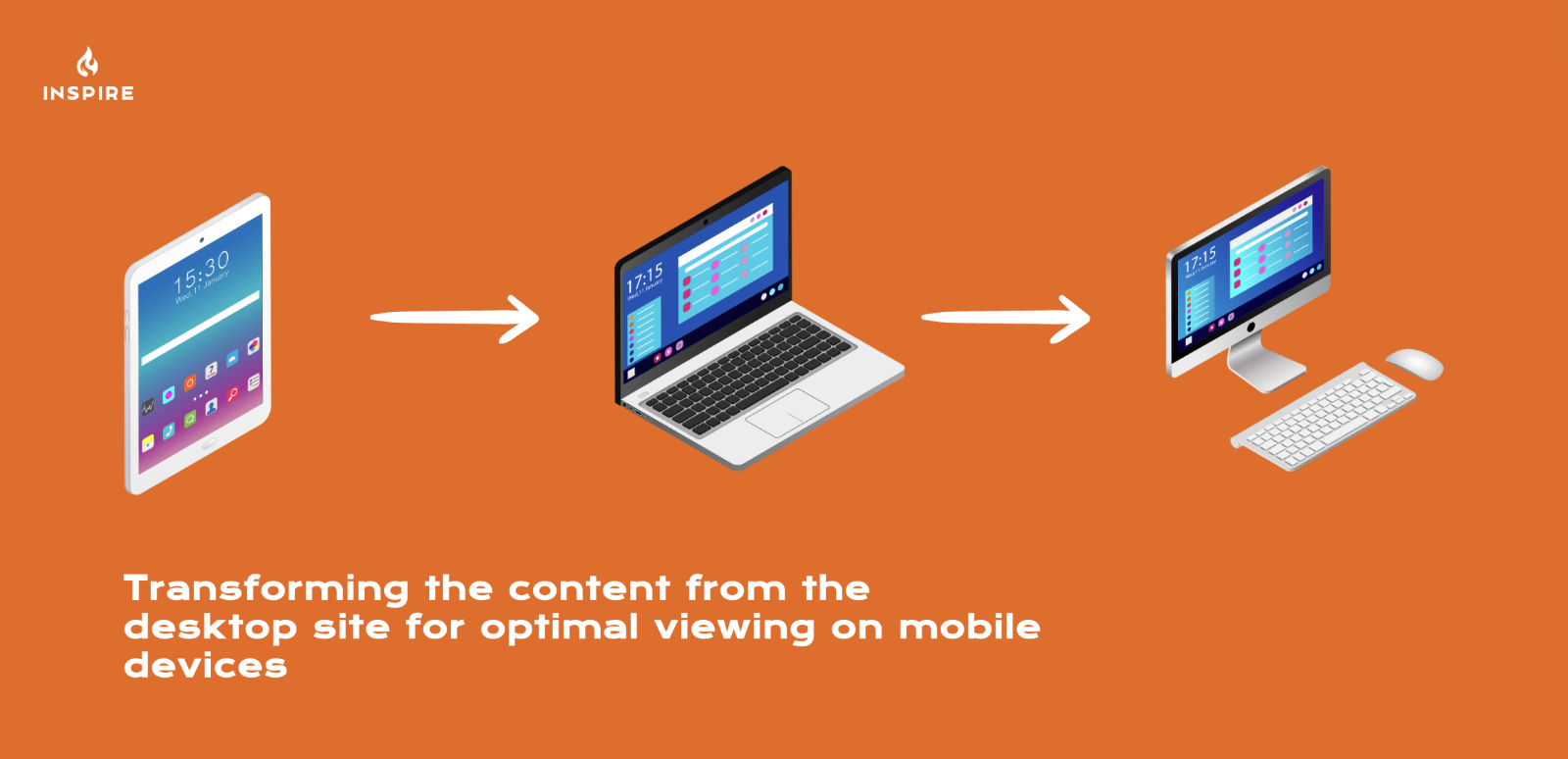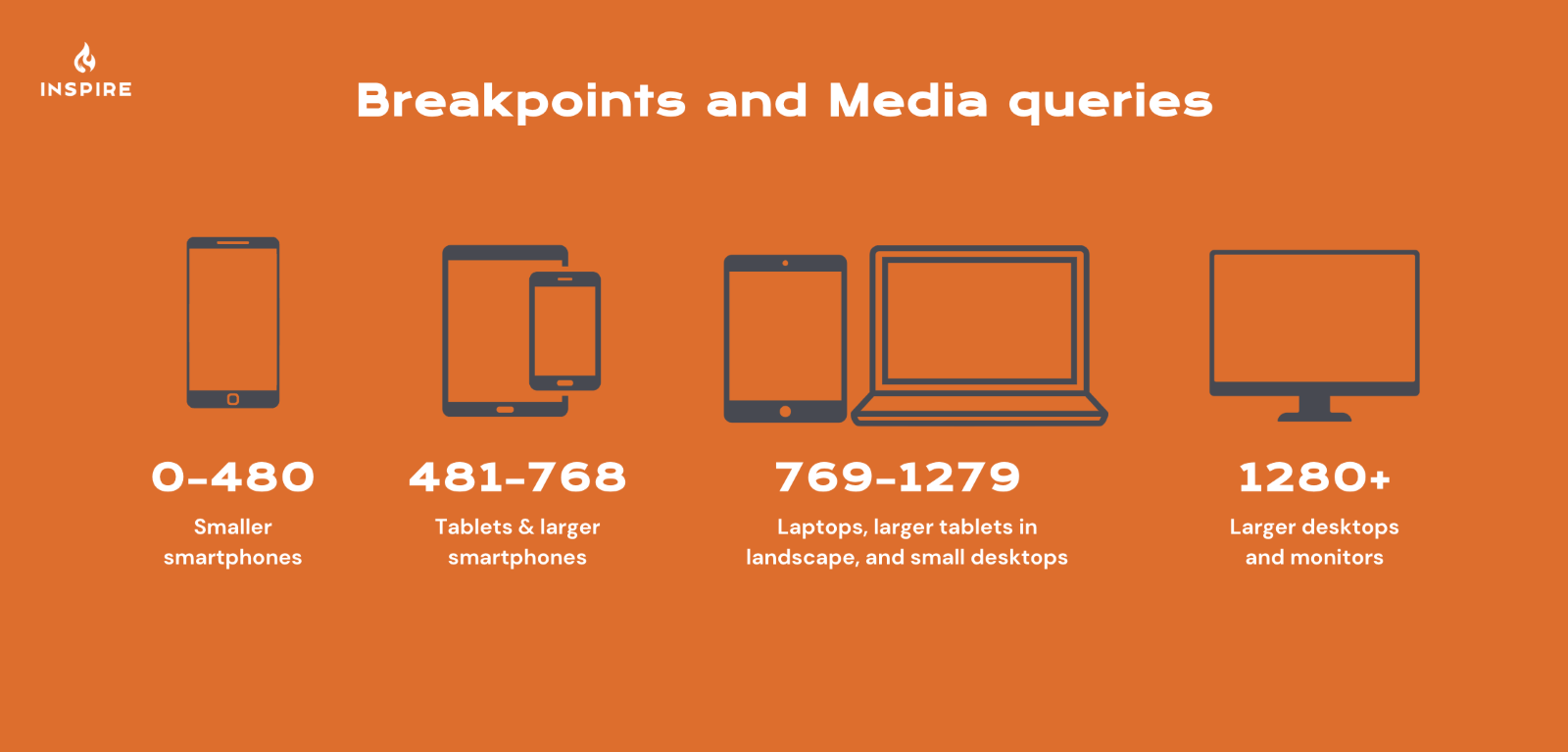Is Your E-Commerce Website Ready for Mobile Commerce Trends? |
|
by David Dwyer on 28/05/2024 |
|
A few years ago, the emphasis in eCommerce was on ensuring your store was 'mobile responsive', a trend actively pursued by most online retailers... and us at Inspire Digital. The mantra was clear: "Optimise your websites with mobile users and watch your success skyrocket " Ever since then, the mobile commerce scene has blown up. Smartphones are getting fancier without breaking the bank, and thanks to the pandemic, online shopping is booming across all age groups. Nowadays, shopping on your phone is everywhere, and that means the game keeps changing. Just being 'mobile-friendly' isn't cutting it anymore; it's time to step up your brand game. According to Shopify, mobile commerce is set to dominate 68.9% of all eCommerce sales by 2022. We're here to help you get ahead of the curve by embracing these trends in your e-commerce website before your rivals catch on. In today's blog post, we're diving deep into the coolest mCommerce trends that are shaping the future of retail. Let's get into it! What is mobile commerce?Mobile commerce, also referred to as mobile e-commerce or m-commerce, involves conducting transactions online through a mobile device. It's a crucial aspect of e-commerce that warrants attention to avoid lagging behind competitors. Any online transaction carried out using a smartphone or tablet falls under the umbrella of mobile commerce. While purchasing goods on a mobile device is the most prevalent form, mobile commerce encompasses a broader spectrum. Here are seven contemporary examples of mobile commerce:
The growing significance of mobile commerceMobile shopping really took off in 2020, growing by 18% compared to the previous year, largely due to the impact of COVID-19 and the increasing popularity of online shopping. The effects of the pandemic are still influencing mobile commerce trends, with retail sales via mobile devices projected to reach $415 billion by 2022. Looking further ahead, it's estimated that this figure could nearly double by 2025, reaching around $710 billion. So, how many online stores are adapting to mobile? Well, in 2022, almost 42% of all online sales in the US were made through mobile devices. Looking ahead to 2025, it's predicted that over 44% of sales will come from mobile and gradually evening out the mobile shopping landscape. According to a report by Insider Intelligence, mobile shopping is set to keep growing, reaching nearly 9% of all retail sales by 2026. This year 2024, we're expecting over 187 million people in the US alone to be active mobile shoppers. Back in 2019, people in the US were spending about 3 hours and 45 minutes on their smartphones every day. Fast forward to 2020, that jumped to 4 hours and 16 minutes. And in the beginning of 2022, it kept climbing, hitting over 4.5 hours per day. That's a significant amount of screen time. And you better believe some of that time is spent shopping. Around 187.5 million users are expected to be actively shopping on their phones in 2024, up from 167 million in 2020. So, this 2024, a significant portion of users will have made at least one purchase on their mobile device. Importance of mobile optimisation for e-commerce websitesRetailers need to nail down a hassle-free shopping experience. That means not just focusing on offline communication, but also smoothing out all online interactions – with mobile taking centre stage in turning browsers into buyers. Today's shoppers are always on the move digitally, switching between devices to browse and make purchases. The challenge is to ensure a seamless experience across all gadgets, especially on mobile. Without putting mobile first, retailers risk losing out as customers easily click away to other sites. Benefits of a responsive design on mobile user experienceCost and time savingsRather than developing separate versions of an app for different platforms, responsive design allows web developers to create a single app that functions seamlessly across devices, saving both time and resources. Expanded reachAs mobile usage continues to grow and data analytics become increasingly important, having a responsive app design allows you to reach a broader audience and gather valuable insights, regardless of the device they use. Higher conversion ratesPositive user experiences lead to increased engagement and higher conversion rates, as users are more likely to become customers or loyal users. Improved user experienceResponsive design ensures that the app's interface and content appear correctly on all devices, providing a consistent and user-friendly experience. SEO benefitsSearch engines prioritise responsive websites and mobile apps, resulting in improved search rankings and greater visibility. Simplified maintenanceResponsive design streamlines the process of managing updates and fixing bugs, as changes made to the app's codebase apply universally across all devices. Strategies for enhancing mobile commerce on large e-commerce platformsMaking mobile apps that work great on any device is super important. Here are some tips to help developers do just that: Adopt a mobile-first approach
Prioritise the mobile version of the app when designing, embracing the mobile-first approach. This involves focusing on essential features and content tailored for smaller screens initially. Subsequently, developers can progressively enhance the design for larger screens, aligning with current trends in mobile app development. Utilise fluid grids and flexible layoutsFluid grids and flexible layouts are foundational to responsive design. By using percentage-based measurements instead of fixed pixel values, the app's content can dynamically adjust and fill the available space on various screen sizes, ensuring consistent readability and usability. Implement scalable images and iconsEffective use of images and icons significantly contributes to an app's visual appeal. Utilise scalable image formats like SVG and employ CSS media queries to adjust their size and resolution according to the device's screen, ensuring optimal display across all devices. Define breakpoints and media queries
Identify specific breakpoints in the app's layout where design adjustments are needed based on screen size. Employ media queries to define these breakpoints and apply corresponding styles or layouts, enabling the app to adapt seamlessly to diverse screen sizes and orientations. Maintain consistent UI designConsistency in UI design elements such as colours, typography, icons, and navigation is key to providing a seamless user experience across different devices. Ensuring uniformity facilitates easy navigation for users, regardless of the device they're using. Optimise performanceAddress high expectations for app performance among mobile users by optimising performance. This entails minimising file sizes, reducing HTTP requests, and implementing caching techniques to achieve faster load times and overall improved performance. Conduct thorough testing and QAComprehensive testing and quality assurance are critical aspects of responsive design. Test the app rigorously on various devices, screen sizes, and orientations to identify and rectify any layout or functionality issues. Incorporating user testing and feedback also provides valuable insights for ongoing enhancements. Mobile commerce trends to watchMobile commerce, or mCommerce, is transforming how we shop. In 2023, it hit a staggering $2.2 trillion in sales, comprising 60% of all global e-commerce transactions. Projections suggest it'll soar to $3.4 trillion by 2027, dwarfing its $982 billion mark in 2018. Social commerce boomSocial media platforms are now bustling marketplaces. Apps like Instagram and TikTok aren't just for scrolling anymore – they're hubs for shopping too. Sales via social media could surge to $8.5 trillion by 2030, offering businesses an accessible and lucrative channel. Voice shopping on the rise Voice assistants like Siri and Google Assistant are changing the game. With 4.2 billion active devices and $112 billion projected market value by 2032, voice shopping is becoming the norm. Retailers are adapting, and optimising for conversational searches and user-friendly interactions. One-click ordering convenienceOne-click checkout is a game-changer for mobile shoppers. By simplifying the purchase process into a single click, it boosts conversions and user satisfaction. Studies show it increases purchase frequency by 43% and items bought by 36%. Tackling mobile fraudAs mobile commerce grows, so does mobile fraud. Unauthorised transactions and fake apps are on the rise, comprising 61% of all fraud in 2023. Retailers are beefing up security with biometrics and encryption to protect both themselves and their customers. AI chatbots enhance the experienceChatbots are revolutionising customer service in mobile commerce. They offer quick, personalised assistance, guiding shoppers through their journey. With 80% of voice searches expected to be conversational by 2024, chatbots are becoming indispensable. Virtual marketplace dominanceMarketplace apps like Amazon and eBay rule the mobile commerce space. Their broad reach, optimised interfaces, and trusted reputation make them go-to destinations for shoppers and sellers alike. Immersive VR and AR ExperiencesAugmented Reality (AR) and Virtual Reality (VR) are reshaping mobile shopping. By offering immersive product experiences, they bridge the gap between online and in-store shopping. With a market value projected to hit $57.26 billion in 2023, their impact is undeniable. Embracing omnichannel strategiesSeamless integration across physical stores, e-commerce sites, and mobile platforms is key to success. Mobile apps play a crucial role, offering personalised experiences and direct communication channels. Push notifications, for instance, boast a 27.6% open rate and drive purchases 28% of the time. In a nutshell, mobile commerce is booming, and businesses that embrace these trends stand to gain a competitive edge in the ever-evolving digital landscape. Ready to make your mark in commerce?At Inspire Digital, we specialise in transforming e-commerce websites, ensuring they're responsive and up-to-date with the latest mobile commerce trends. Let's work together to elevate your online business presence! Get in touch today. |
|
e-commerce, m-commerce, Mobile Commerce, User eXperience, UX Design, Web Design
|
|
NEXT ARTICLE
PREVIOUS ARTICLE
|






















